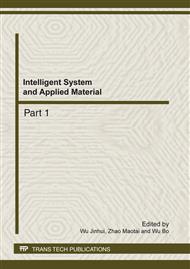[1]
J.P. Buhler, H.W. Lenstra, Jr.,C. Pomerance. Factoring integers with the number field sieve. LNCS 1554 in Lecture Notes in Mathematics, pp.50-94. Springer-Verlag, (1993).
DOI: 10.1007/bfb0091539
Google Scholar
[2]
A.K. Lenstra, H.W. Lenstra, Jr. M. S. Manasse, J. M. Pollard. The Factorization of ninth Fermat Number, Math. Comp. 61, (1993).
DOI: 10.1090/s0025-5718-1993-1182953-4
Google Scholar
[3]
J. M. Pollard. The Lattice Sieve. In Arjen K. Lenstra and Hendrik W. Lenstra, Jr., editors, The development of the number field sieve, number 1554 in Lecture Notes in Mathematics, pp.43-49. Springer-Verlag, (1993).
DOI: 10.1007/bfb0091537
Google Scholar
[4]
Brian Antony Murphy. Polynomial Selection for the Number Field Sieve Integer Factorisation Algorithm. A Thesis submitted for the degree of doctor of philosophy of the Australian National university, July, (1999).
Google Scholar
[5]
S. Cavalla. Strategies filtering in the number field sieve. MAS-R0012 MAY 31, (2000).
Google Scholar
[6]
Peter L. Montgomery. A block Lanczos algorithm for finding dependencies over GF(2). In Advanced in Cryptology-Eurocrypt'95, LNCS 921, pages 106-120, Springer-Verlag, Berlin, (1995).
DOI: 10.1007/3-540-49264-x_9
Google Scholar
[7]
Phong Nguyen. A Montgomery-Like Square Root for the Number Field Sieve. Ecole Normale Superieure Laboratoire d'Informatique 45, rue d'Ulm.
Google Scholar
[8]
Stefania Cavallar, Bruce Dodson, Arjen K. Lenstra, et al, Factorization of a 512-bit RSA modulus. In Advances in EUROCRYPT'00, p.118. Springer, Berlin, (2000).
Google Scholar
[9]
Thorsten Kleinjung , On polynomial selection for the gereral number field sieve, Math. Comput. , vol. 75, no. 256, pp.2037-2047, (2006).
DOI: 10.1090/s0025-5718-06-01870-9
Google Scholar
[10]
Peter L. Montgomery, Searching for Higher-Degree Polynomials for the General Number Field Sieve. Microsoft Research, USA, and CWI October, (2006).
Google Scholar
[11]
Jens Franke, Thorsten Kleinjung, Continued fractions and lattice sieving. proc. Workshop on Special Purpose Hardware for Attacking Cryptographic Systems (SHARCS) 2005, February (2005).
Google Scholar


